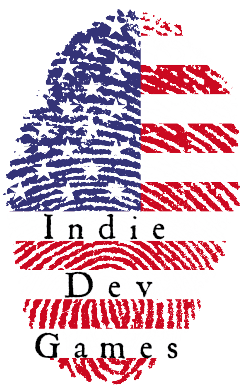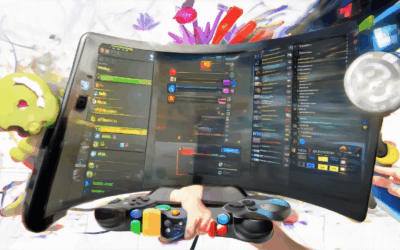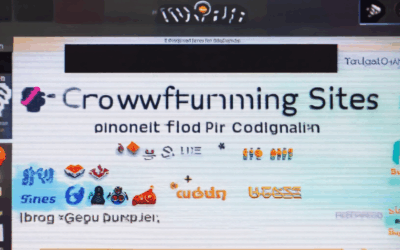Immerse yourself in the dynamic realm of game design with the help of inspiration boards—a cornerstone of creative development. Whether you’re crafting a board game, designing digital experiences, or exploring artistic concepts, inspiration boards serve as vital tools for capturing your vision. While often confused, mood boards and inspiration boards each play distinct roles in the creative process. Mood boards, which focus on setting the emotional tone and atmosphere, are essential for establishing the ambiance of your project. On the other hand, inspiration boards are where you gather and organize elements that drive your design decisions, blending aesthetic and functional aspects seamlessly. In this article, we’ll clarify the differences, explore the components of effective board game designs, and provide actionable strategies for creating inspiration boards that elevate your projects. From understanding the legal aspects of mood boards to discovering the best tools for inspiration board creation, this guide offers comprehensive insights to empower your creative journey. Let’s dive into the fascinating world of game design inspiration boards and unlock the potential to bring your ideas to life.

Are Mood Boards Legal?
Yes, mood boards are legal, but their creation and usage must comply with copyright laws and intellectual property rights. Here’s a breakdown of the key considerations:
Mood Board Creation and Usage Rights
- Original Work : If you create a mood board from scratch using your own designs, textures, and imagery, you own the copyright to it. You can use it however you wish without violating any laws.
- Copyrighted Material : If your mood board includes images, designs, or content created by others, you may need permission to use them. Copyright law protects original works, so using unlicensed third-party content can lead to legal issues.
Legal Considerations for Mood Boards
- Fair Use : In some cases, using copyrighted material may fall under fair use, particularly for educational purposes, inspiration, or critical analysis. However, always seek permission to avoid potential disputes.
- Royalty-Free Resources : Many artists and designers offer royalty-free assets specifically for mood boards. Incorporating these can significantly reduce legal risks.
Best Practices for Creating Mood Boards
- Use Your Own Content : Create your own visuals or source materials from public domains or platforms that allow commercial use.
- Credit Creators : If you use third-party content, ensure proper attribution and check licensing terms.
- Consult Legal Advice : For complex projects or large-scale usage, consult with a legal expert to ensure compliance with international IP laws.
By following these guidelines, you can legally create and use mood boards while respecting the rights of original creators.
What Are Inspiration Boards Called?
An inspiration board is commonly referred to as a mood board . A mood board is a visual tool used across various creative industries, such as interior design, fashion, graphic design, and advertising, to convey the overall aesthetic or emotional tone of a project. It typically consists of a curated collection of images, colors, textures, and other design elements that inspire and guide the creative process.
Synonyms and Related Terms:
- Mood Board : The most common term used to describe inspiration boards.
- Inspiration Board : Another term often used interchangeably with mood boards.
Common Uses:
- Interior Design : Designers use mood boards to plan the aesthetic of a space, showcasing color palettes, furniture styles, and decorative elements.
- Fashion Design : Designers create mood boards to visualize a collection’s theme, incorporating fabric swatches, patterns, and styling details.
- Graphic Design : Artists use mood boards to brainstorm visual concepts for branding, packaging, or advertising campaigns.
- Advertising : Creative teams compile mood boards to align on the visual direction of a marketing campaign.
By using terms like mood boards and inspiration boards, designers effectively communicate their vision and help stakeholders visualize the final product.

What Makes a Good Board Game Design?
A well-designed board game offers an engaging, immersive experience that captivates players while encouraging strategic thinking and social interaction. Here are the key elements that define a successful board game design:
1. Strong Theme Consistency
A cohesive theme provides a clear narrative and purpose, guiding players through the game’s objectives. Consistent visuals, symbols, and mechanics reinforce the theme, making it easier for players to understand and engage with the game.
2. Balanced Gameplay Mechanics
The core mechanics must be simple enough for quick learning yet complex enough to offer depth. A perfectly balanced game avoids overwhelming players with complicated rules while still providing strategic decisions that keep them engaged.
3. Engaging Visual Design
Visually appealing components, such as high-quality graphics, vibrant colors, and thematic artwork, enhance the overall experience. The design should resonate with the game’s theme, creating an aesthetic that feels immersive and polished.
4. Clear Instructions and Accessibility
Players should be able to grasp the rules quickly and understand their actions. Clear instruction manuals and intuitive component placement ensure that everyone can participate without confusion. Considerations for accessibility, such as colorblind modes or audio guides, further enhance inclusivity.
5. High Replayability
Great board games offer multiple ways to win, allowing players to experiment with different strategies each time. Mechanisms like variable player powers, scenario cards, or modular boards add layers of depth, making the game feel fresh every time it’s played.
6. Component Variety
Diverse components, such as different types of tokens, cards, or tiles, add strategic options and increase the game’s complexity. This variety encourages creativity and experimentation, making each playthrough unique.
7. Perfect Balance Between Components
Each element in the game should complement the others without overshadowing. Overpowered components or imbalanced mechanics can alienate players, so careful testing and iteration are essential to strike the right balance.
8. Consideration for Audience
Game designers must tailor the difficulty, complexity, and playstyle to suit their intended audience. Whether targeting casual gamers or hardcore strategists, the design should adapt to meet the needs of its players.
By focusing on these elements, a board game design can deliver a memorable and rewarding experience that continues to evolve with each play.

How to Create a Thoughtful Inspiration Board
To craft a meaningful inspiration board, follow these organized steps:
- Choose Your Tools: Select a large canvas, poster board, or digital platform. Use markers, glue sticks, or apps for easy organization.
- Gather Your Materials: Collect images from magazines, social media, or your own camera. Include quotes, sketches, and personal memorabilia.
- Organize Your Board: Group similar themes together. Use a grid layout and add dividers for separation. Consider using borders for a clean look.
- Add Personal Touches: Incorporate personal photos and write down favorite quotes. This makes the board uniquely yours.
- Maintain and Update: Regularly refresh your board by replacing outdated items and adding new finds. Digitally archive old boards for future reference.
By following these steps, you’ll create a dynamic and personalized inspiration board that fuels your creativity and motivation.
Mood Board vs. Inspiration Board
A mood board is a visual representation that captures the emotional tone and aesthetic of a design project, often used in fashion, interior design, or graphic design. It focuses on creating a cohesive visual style that conveys the intended atmosphere or mood of the collection or space.
An inspiration board, on the other hand, is a broader collection of images, textures, and design elements that inspire a particular aesthetic or theme. It serves as a visual brainstorming tool to explore different design directions and gather ideas before refining them into a mood board.
Differences:
- Scope: Mood boards are more focused on the specific project’s emotional tone and visual style, while inspiration boards gather a wider range of elements to spark creativity.
- Purpose: Mood boards are used during the design process to guide decisions, whereas inspiration boards help define the aesthetic and themes before creating mood boards.
- Usage: Mood boards are often created after the inspiration board to narrow down the visual elements, while inspiration boards provide the initial direction and ideas.

How to Create a Motivation Board
A motivation board is a powerful tool for staying inspired and focused. Here’s a step-by-step guide to building one:
- Define Your Purpose
- Gather Your Materials
- Create the Layout
- Add Visuals and Symbols
- Select Words and Phrases
- Personalize Your Board
- Maintain and Update
Start by clarifying what you aim to achieve. Are you looking to stay motivated for a specific goal, project, or personal growth? Clearly define your objectives to guide your board.
Collect supplies like a large poster board, markers, sticky notes, scissors, and glue. Optionally, use digital tools like graphic design software or online collaboration platforms for a virtual board.
Design a clean and organized layout. Consider dividing your board into columns for different categories, such as daily goals, weekly achievements, or long-term aspirations. Use a grid format for better organization.
Include inspiring images, quotes, or icons that resonate with your goals. Use symbols like checklists or arrows to represent progress and completion.
Write down empowering statements, mantras, or affirmations. Use action verbs to keep your goals dynamic and achievable. Example: “I am capable of achieving great things!”
Make it visually appealing by adding colors, decorations, and personal touches. Personalization helps you connect emotionally with your board, making it more effective.
Regularly review and update your board. Replace completed tasks with new ones, adjust your vision as needed, and keep the energy fresh. A stale board loses its impact over time.
By following these steps, you’ll create a personalized motivation board that inspires and drives you toward your goals. Keep it visible in your workspace to remind yourself of your purpose daily.
For more tips and inspiration, explore our tutorial library and discover how to unlock your creative potential!




0 Comments